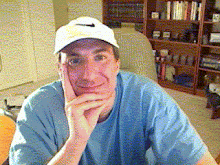I'm Scott Boulding, and I have been a professional Anatomy & Physiology, Pathophysiology, and Biology teacher for some years now. The idea for this blog was born of my own students' struggles with and attempts to master the large volume of challenging material these courses represent. One of them aptly described the learning process as akin to "taking a sip of water out of a fire hose!" So, I decided to create an online forum in which they could share ideas, ask questions, provide useful links, exchange study tips, and so on. Soon realizing that such a resource could benefit other students from the high school through the grad school levels, I decided to make this blog available to the general public. If you are taking Anatomy and Physiology, Human Biology, Gross Anatomy, Human Physiology, or Pathophysiology, this blog is for you. If you are a teacher of any of these courses, you are also welcome to provide comments, feedback, and answers to student questions. Everyone with an interest in these subjects is welcome here!
In addition to the questions and comments threads, I will also be posting key terms and their definitions daily (think of it as your Anatomy and Physiology
Word-a-Day calendar), as well as discussing and explaining a different A&P concept each week. Feel free to add to the discussion, expand upon the information, ask questions -- whatever will be useful to you as you try to learn the material! From time to time, I will also throw in some short quizzes to help you test your knowledge and understanding
If you feel like you need more intensive tutoring, you can also find me at
www.globalscholar.com or at
http://imlive.com/waitingroom1ms.asp?hostnick=DocentisMaximus. If you're in the Tampa Bay area and want some live, one-on-one tutoring, just drop me an email (
sboulding@tampabay.rr.com), and I'll be happy to arrange a meeting that is convenient for both of us.
In the meantime, enjoy the blog; I hope you find it helpful. As with anything, you'll get out of it what you put into it -- trite, I know, but true, nevertheless. Good luck with your studies!
Scott Boulding



